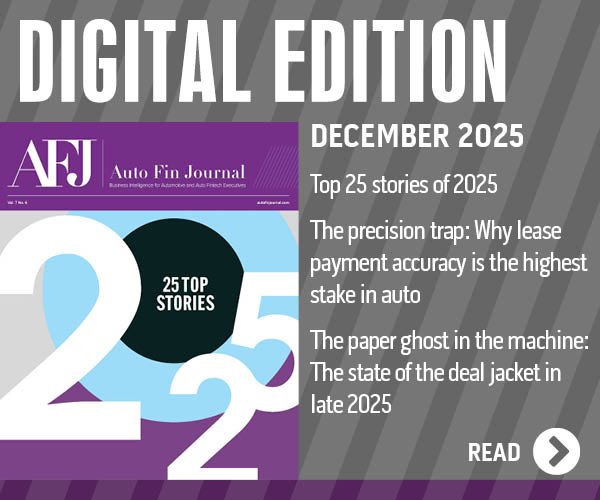COMMENTARY: Automakers need new strategies to counter the impact of evolving regulations

By subscribing, you agree to receive communications from Auto Remarketing and our partners in accordance with our Privacy Policy. We may share your information with select partners and sponsors who may contact you about their products and services. You may unsubscribe at any time.
New tariffs plus a longstanding trend of unsustainable price increases are combining to pose fresh challenges for automakers, suppliers, and retailers. In particular, how can the auto industry better control costs quickly to make their products more affordable for consumers?
Affordability was a growing problem for the automotive sector even before new trade policies took effect. In recent years, the average transaction price of new vehicles increased by 3-5% annually, reaching a high of more than $47,000 in March of this year. Now, with tariffs in the mix, economists are forecasting additional cost increases of anywhere from $2,000 to $15,000 per vehicle, depending on where parts are sourced and vehicles are assembled.
The tariffs are meant to spur investment in US-based manufacturing, but that requires long-term planning and investment. In the meantime, there’s more pressure on automakers and dealers to be strategic about forecasting, demand management, supply chain flexibility, and data-driven decision making. Deploying adaptive strategies now can help automotive businesses rein in costs in the short term and develop greater resilience for the long term.
Take a fresh look at your resources and processes
—Dig into data for inventory optimization: This is not the time to have excess inventory sitting on lots, incurring costs. Accurate model, trim, and vehicle forecasting is paramount to align build, distribution, delivery, and sale.
One path to better forecasting is to leverage data around online interest, measured in terms of digital configurations, lead management clicks, and similar indicators. Another way to attack the problem is to focus on pre-sales, to get as many vehicles under contract as possible while they’re still in transit to the port or the dealership.
—Use supply chain data for more holistic demand management: When a specific trim or model is affected by changes in cost or availability, it’s possible to quickly incentivize other choices. For example, if there’s a sudden price increase on components for a model’s most popular option, lowering the price on the next most popular version could push it to sell faster and make up revenue to balance out costs on the other option.
Subscribe to Auto Remarketing to stay informed and stay ahead.
By subscribing, you agree to receive communications from Auto Remarketing and our partners in accordance with our Privacy Policy. We may share your information with select partners and sponsors who may contact you about their products and services. You may unsubscribe at any time.
To make this kind of pivot work, the whole system from supply chain to demand management must be flexible, visible, and connected for fast, accurate sensing and response to changing conditions. At the same time, manufacturers and suppliers need to be working quickly to find ways to source, manufacture and assemble locally. That might require forming new partnerships or joint ventures.
—Be intentional with incentives: Incentives have come roaring back after virtually disappearing during the pandemic. Now, they equal about 7% of the average total vehicle price, but generic incentive programs aren’t the only route available.
Using customer data to personalize incentives can drive more sales. For example, when shoppers use your site to configure a model that there’s a lot of in inventory, a targeted and slightly larger than average incentive could help move that vehicle and clear out excess inventory faster, reducing costs.
—Get creative about moving vehicles: Car makers, retailers and finance companies can find new ways to leverage incentives, offers, and consumers’ current equity positions to get them into new cars at a monthly payment that they can afford. That might look like a subscription model rather than traditional ownership. It might involve a new loan type that’s integrated with the buyer’s mortgage or new lease length options that better fit consumer needs.
Longer loan repayment periods should also be on the table. For example, because today’s vehicles have a longer lifespan and hold their value better than those a generation ago, a loan of up to 8 or even 10 years would make auto purchases more affordable for many consumers.
—Focus on resolving long-term affordability challenges: So far, we’ve looked at strategies for controlling costs and generating revenue in the near term. Some of these methodologies can also help car makers tackle the longstanding problem of how to ensure that their offerings remain affordable for their customers.
For example, new financing and ownership/use models support the overall trend of consumers being more interested in mobility experiences than they are in traditional vehicle ownership. Shifting to an experience-focused business model allows for more of the options discussed above, like subscription models or short-term leases, which allow consumers more ways to fit a vehicle into their budget.
Embrace a holistic, experience-driven mindset
All the strategies above require unified data or the ability to cross-reference data from different silos, which most automakers now have. The idea now is to use AI models to speed up the process of data analysis and solve for the optimization of selected KPIs immediately rather than in 30 to 90 days.
Making the most of these strategies also requires a mind shift across the industry. Automakers and retailers need to move away from the notion of a rigidly sequential and transactional supply chain, toward the concept of an ecosystem that delivers mobility experiences rather than just products. For individual organizations, the mindset shift starts with leadership buy-in. Leadership’s commitment should include a willingness to redefine success through new benchmarks and KPIs, followed by mandates for working toward the new goals.
Companies that embrace this new mindset and act on it strategically can ideate new ways to address affordability issues, generate revenue, deliver exceptional customer experiences, and profit even when consumer behavior and market conditions change. That kind of resilience is what OEMs and retailers need to face whatever challenges appear next.
Dennis Ephlin is head of auto industry innovation and transformation at Capgemini Invent North America. Dennis is a deep experienced and recognized industry leader, especially in the future of retailing, customer experience, mobility futuring and business innovation and transformation. He has held multiple leadership positions where he has managed and driven multi-million dollar business transformations, new revenue and customer opportunities, innovative go-to-market creations, and overall value and ROI delivery. Dennis has worked at General Motors, J.D. Power, Cox Automotive and consulted with some of the greatest global brands such as Penske, Subaru, Ford, Cox Automotive, Jaguar and many others. He currently serves as the head of auto industry innovation and transformation within the Capgemini Invent North American Automotive Group where he works with and advises global OEMs, suppliers, retailers and mobility companies on industry transformation and innovation to drive new opportunities, revenue and ROI.


